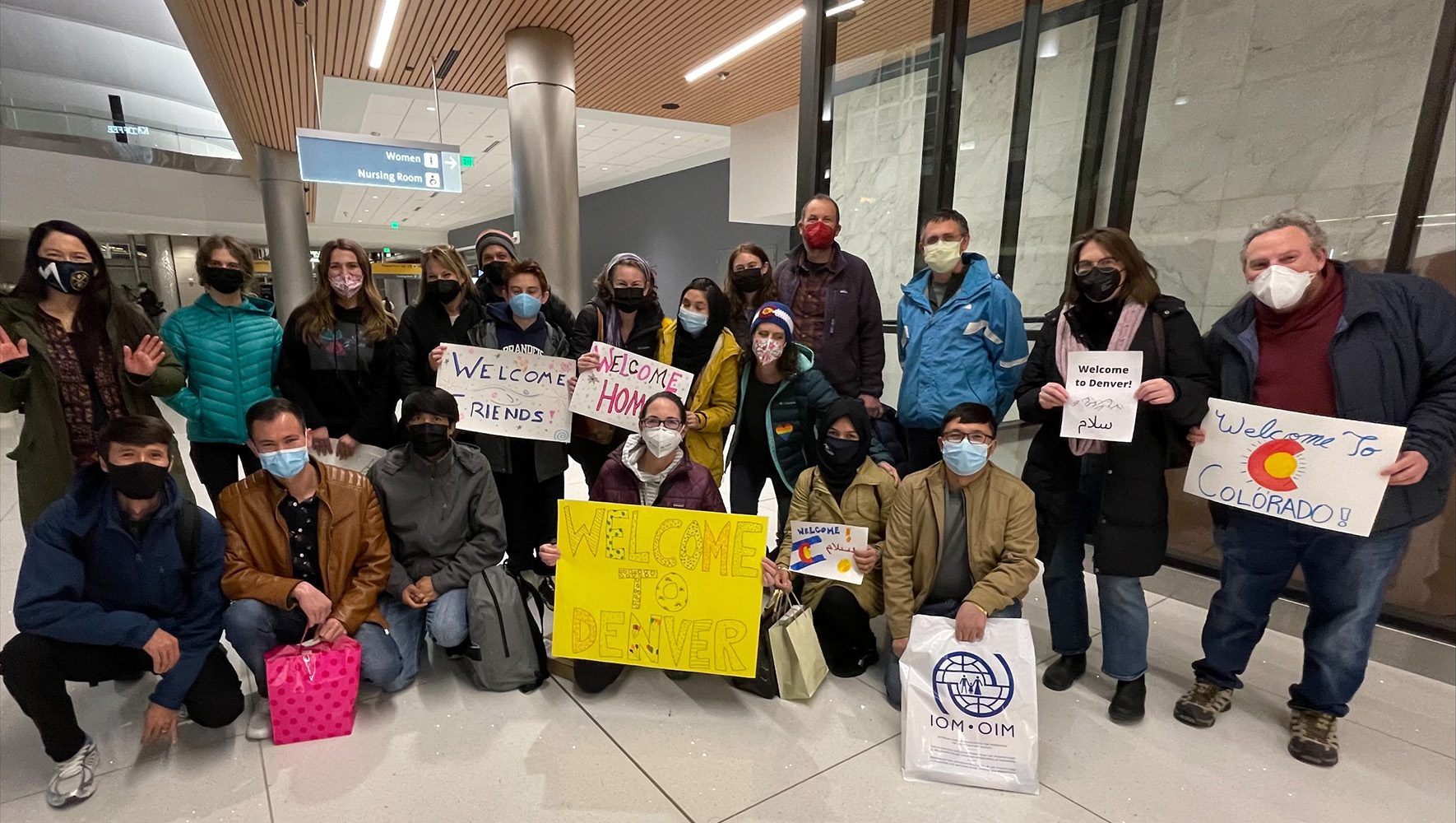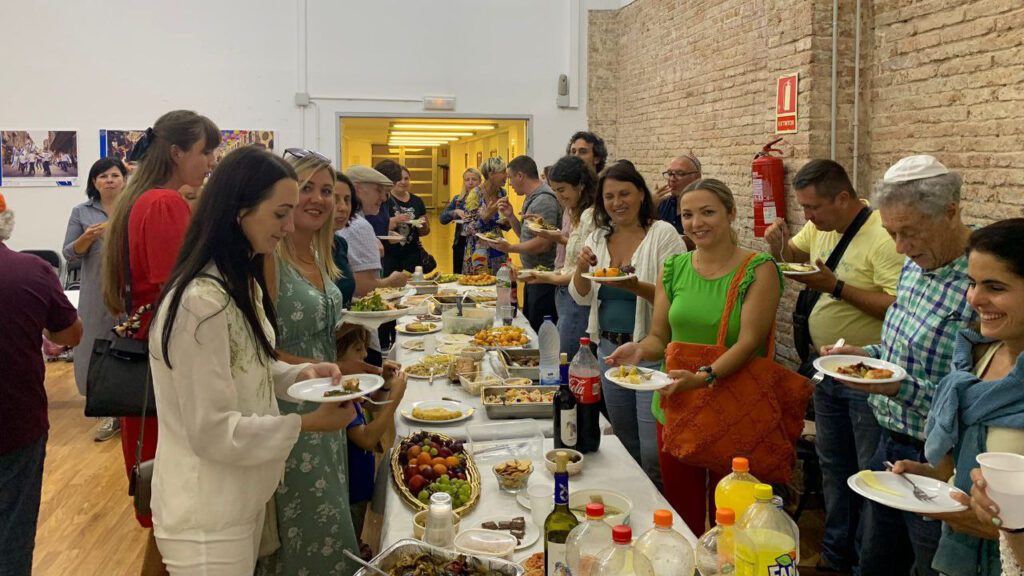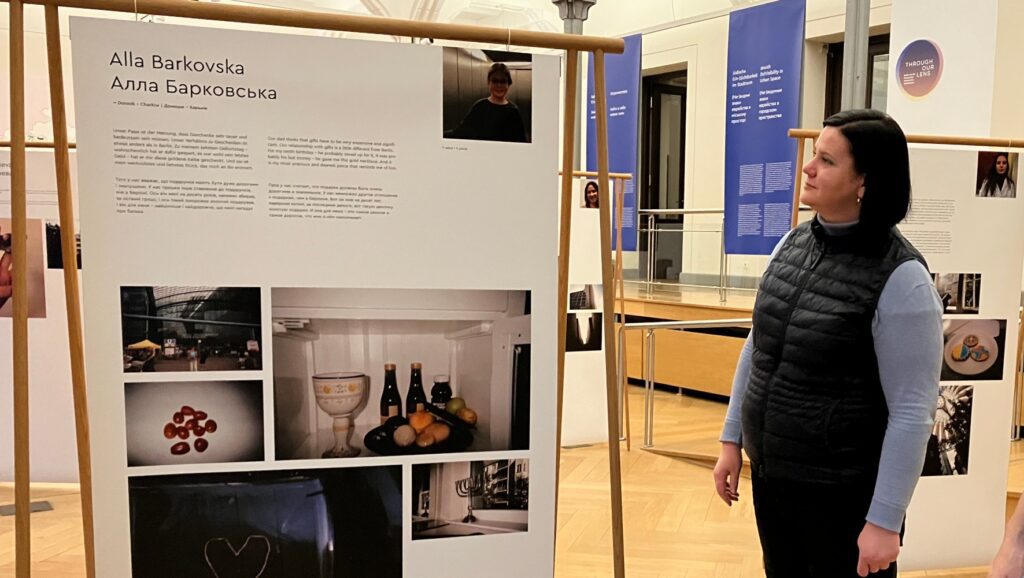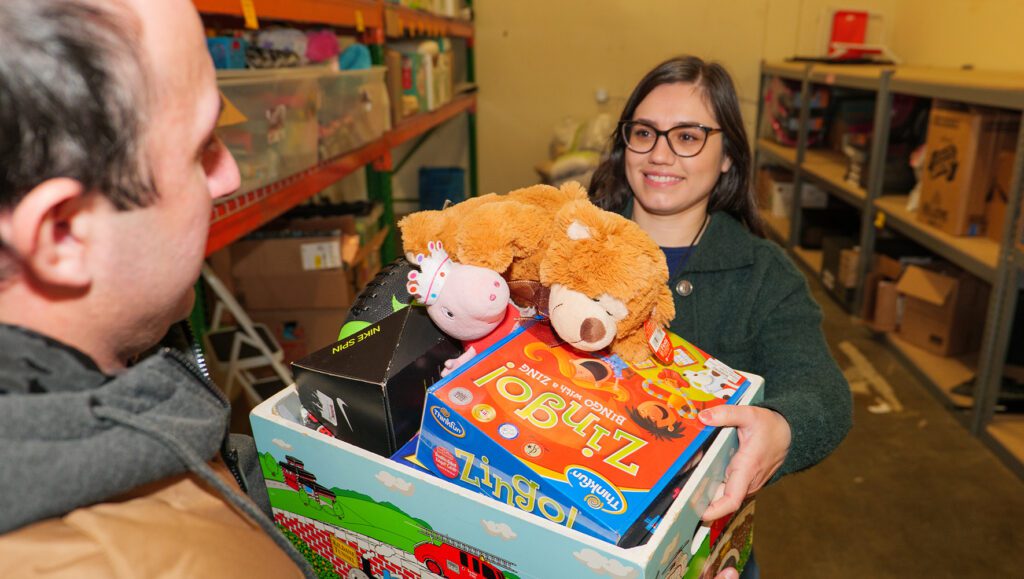It looked like a pandemic homecoming. A small crowd gathered to greet an incoming plane at Denver International Airport on February 2. Families were wearing medical masks and carrying homemade signs in bright marker that read “Welcome to Denver,” “Welcome Friends,” and “Welcome Home” in English and Dari. Rather than reuniting with old friends, though, the assembled congregants of Congregation Rodef Shalom were there to greet their new neighbors – the second family of Afghans to be resettled through HIAS’ new Welcome Circles program.
“We as a community have been advocating for immigration and speaking out for refugees for years,” said Rabbi Rachel Kobrin, Congregation Rodef Shalom’s rabbi and a member of the Welcome Circle. “This was an immediate way to put our values and our words into action in a concrete way that would actually help people on the ground.”
HIAS’ Welcome Circles are part of a new program authorized by the Biden Administration in October 2021 in order to expand the United States’ capacity to resettle the over 76,000 Afghans evacuated during Operation Allies Welcome. The program, which is administered by Community Sponsorship Hub, allows private citizens and communities to be directly involved in the resettlement and integration of their new neighbors for the first time in decades. At least five individuals form a circle and, with certain legal guardrails, agree to take on responsibilities usually administered by resettlement professionals.
There are currently 32 certified HIAS Welcome Circles, 25 of which have been matched with the Afghan families they will assist. As of February 16, 21 families have arrived within HIAS’ network. The first family welcomed through the program arrived in Maryland on January 27, met by circle members from Baltimore Hebrew Congregation. Since then, Welcome Circle families have reached communities in Pasadena, Los Angeles, and Palo Alto, Calif.; Rockville, Md.; South Orange and Englewood, N.J.; Milwaukee; Cincinnati; Denver; St. Louis; Durham, N.C.; and Binghamton and Poughkeepsie, N.Y. The remaining families are expected to arrive in the next few days.
“It is amazing to see the circles mobilizing in this way, to welcome Afghan newcomers with generosity and dignity,” said Isabel Burton, HIAS’ senior director of community engagement programs and initiatives. “We are inspired – but we are not surprised – by the way the Jewish community is coming together with open hands and hearts to participate in this project.”
The responsibilities that communities undertake when joining this program are manifold. For members of Welcome Circles, the most exciting moment of preparation is often getting an apartment key for their new arrivals. That’s because crucially, circles must secure housing and provide funds for food, clothing, utilities, and other necessities.
Less obvious, but over time, equally vital, are the many ways that circle members can help guide Afghan evacuees as they adjust to their new lives: finding jobs, enrolling the children in schools, finding cultural connections in a new city, obtaining driver’s licenses and social security cards, accessing benefits and legal assistance, and numerous other aspects of setting up life in a new country. HIAS’ Welcome Circles commit to providing six months’ support to the family with whom they are matched, well beyond the 90-day minimum required by the national model. By the end of that time, the goal is for the resettled family to be economically self-sufficient.
“There’s a Welcome Circle community, but then there are members of the broader synagogue community that are filling responsibilities as well,” explained Rabbi Kobrin. “Here’s a newly arrived kid whose first language isn’t English, and she’s starting school. How can we as a community make sure that she’s secure? One kid is going to pick her up and drop her off at each of her classes on the first day, and another kid is taking that role on the second day. We have students in her grade who are already set to eat lunch with her. Members of the community are figuring out carpools for her until she is ready to take the bus.”
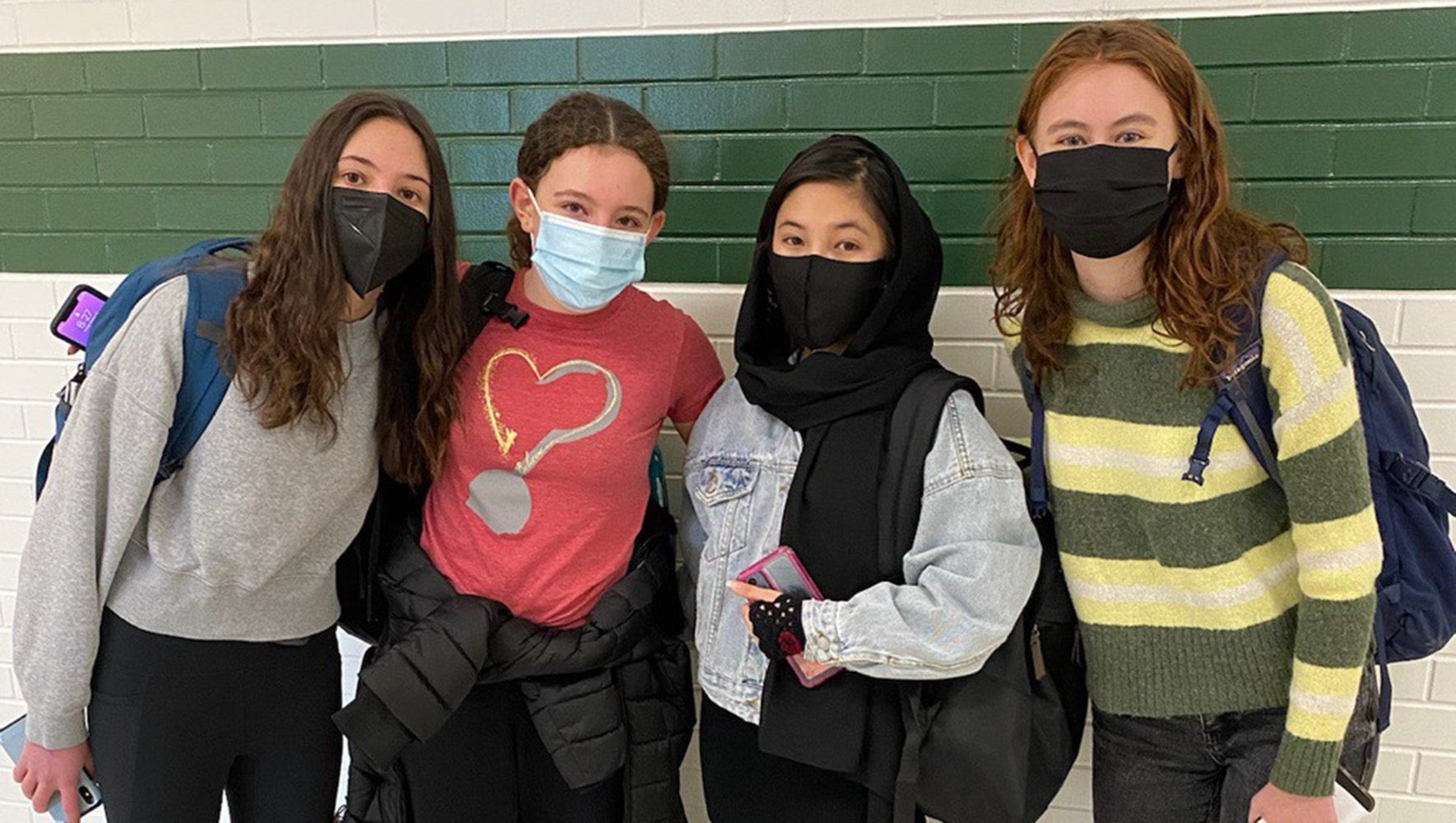
A newly-arrived Afghan evacuee, resettled by the Congregation Rodef Shalom Welcome Circle, with her new friends on her first day of school. (Courtesy of Congregation Rodef Shalom)
To ensure the circles’ success, HIAS provides them with comprehensive support using the organization’s wealth of experience in resettlement. Circles are matched with a Welcome Circle Liaison: a HIAS staff member who helps them apply to the program, prepare for the family’s arrival, navigate post-arrival activities and challenges, and connect with technical and operational resources.
In addition to completing rigorous background checks and paperwork in order to be certified by HIAS, circle members attend workshops and trainings on subjects such as cultural understanding, navigating boundaries, and building trust. Circles also have access to an online community of practice where they can share resources and connect with other Welcome Circles around the country to discuss challenges, ideas, and best practices.
While most HIAS Welcome Circles have been organized by local Jewish congregations, some were formed by community members of different faiths. The Intertwine Interfaith Welcome Circle in St. Louis, Mo. is a collaboration between Congregation Shaare Emeth, Parkway United Church of Christ, and the Turkish American Society of Missouri (TASOM). The three organizations have been engaging in community-building and acts of service together for six years. According to Debbie Bram, Congregation Shaare Emeth’s director of Jewish life and learning, creating a Welcome Circle together was a natural next step for the Intertwine Interfaith Initiative – especially given that many members of TASOM are immigrants to the U.S. themselves.
“Our three religions all share the central principle of making the world a better place. We all share welcoming the stranger. We all share the notion of being displaced at some point,” said Bram, who is one of seven founding members of the Welcome Circle. “Many of the members from TASOM immigrated themselves and had a challenging time being accepted, especially after 9/11, so one of the core reasons that the Intertwine program was created was to build bridges. And so now to do this together, to welcome new refugees, is even making that bridge stronger.“
While private sponsorship has played an important role in bolstering resettlement capacity during a critical period, the vast majority of Afghan evacuees are still being resettled by traditional resettlement agencies, including those in HIAS’ U.S. Resettlement Network.
“The Welcome Circles are the newest resettlement pathway for HIAS, which already has resettled over 3,700 Afghan evacuees in 26 cities, through partnerships with local refugee agencies,” said Merrill Zack, HIAS’ vice president of community engagement. “The volunteers are joining HIAS in a long tradition of welcome, which dates back more than 100 years, and includes the families of most American Jews today.”
